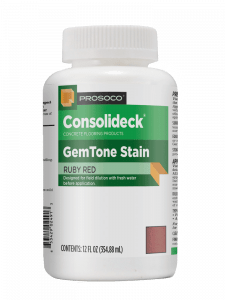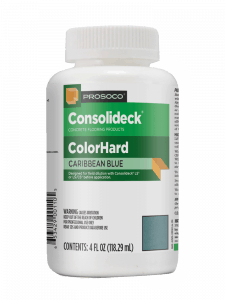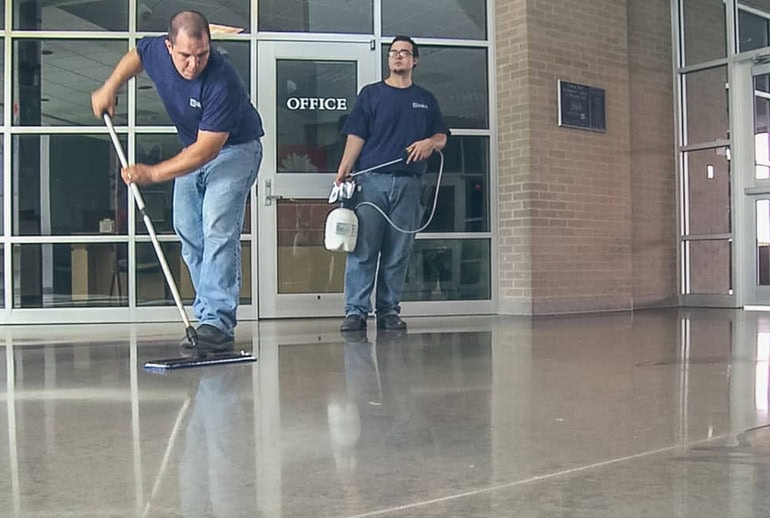Every project deserves a finish that brings character, resilience, and visual depth. Whether you're upgrading a patio or polishing a showroom, the right product can elevate the look and performance of your space. This guide explains how to select the best concrete stain for different environments and expectations.
Types of Concrete Stains and Their Applications
Understanding the Two Main Categories
Selecting the best concrete stain starts with knowing how different product types interact with cementitious surfaces. Acid-based treatments chemically react with minerals in the slab, producing deep, marbled finishes that become part of the material itself. These reactive stains are ideal for high-traffic environments or projects demanding a natural stone-like appearance.
Where Acid-Based Stains Excel
Acid-based stains work especially well in outdoor applications and commercial settings where surface wear is a concern. Their penetrating nature and mineral reaction provide long-term color stability and UV resistance. However, they require neutralization after application and may be limited in color range.
Why Water-Based Stains Are Popular
Water-based colorants offer a wider palette of shades and are easier to handle on the job site. Because they deposit pigment evenly within the substrate, they’re ideal for interior floors or decorative concrete where consistency is key. Their low odor and fast drying times make them a practical choice for occupied buildings or time-sensitive projects.
Matching Products to Project Conditions
Environmental exposure should always factor into stain selection. The best outdoor concrete stain must resist UV rays, moisture penetration, and freeze-thaw cycles. For example, stains used on driveways in northern climates should withstand de-icing salt and thermal contraction, while those on shaded patios need to hold up against humidity and mildew.
Substrate Readiness and Absorption Behavior
No matter how durable a stain may be, it won’t perform without proper surface preparation. If an older concrete surface has previously been treated with a sealer or curing compound, or it simply features inconsistent porosity, it may not absorb the stain uniformly or consistently. Prep work like degreasing, light abrasion, or porosity testing ensures the product penetrates evenly and produces the intended finish.
Highlighting Two Water-Based Concrete Color Systems for Interior and Exterior Use
PROSOCO’s GemTone Stain is a high-performance, water-reducible product formulated for versatility and safety. It's made for interior concrete surfaces and can be applied with sprayers, mops, or microfiber pads. Contractors frequently pair GemTone Stains with Consolideck LS densifier to improve abrasion resistance and extend finish longevity. It is recommended to mix GemTone Stain with water, but it can also be mixed with acetone or denatured alcohol.

For exterior applications, PROSOCO offers ColorHard — a color treatment and hardener designed to protect outdoor concrete while delivering strong, long-lasting pigmentation. Unlike traditional coatings, ColorHard bonds with the slab’s surface to resist UV exposure, abrasion, and moisture penetration. It’s ideal for sidewalks, patios, and exterior flatwork where both appearance and durability are non-negotiable. ColorHard typically is mixed with PROSOCO’s LS/CS, a water-based densifier.

Prioritizing Appearance Without Sacrificing Function
Color is often a major factor in selection. Options range from muted earth tones to vivid reds and contemporary charcoals. Warm shades tend to complement natural surroundings, while cool hues can add bold contrast to modern builds. Still, looks alone won’t protect against long-term wear unless the product is designed to endure.
Interior Environments and Occupant Concerns
Indoor projects bring a different set of priorities. Odor, air quality, and downtime matter—especially in homes or occupied commercial spaces. Water-based options are ideal here due to their low-VOC content and short curing times. Acid-based alternatives create complex finishes but demand more preparation and neutralization steps, which may not be practical for every job.
Preparing Concrete Surfaces for Staining
Proper surface preparation is crucial to ensure optimal adhesion and longevity of the best concrete stain. Cleaning the concrete thoroughly removes contaminants that could interfere with stain penetration and performance. Neglecting this step can lead to uneven coloration and reduced durability.
For general-purpose cleaning, PROSOCO's Light Duty Concrete Cleaner effectively removes rust, mud, atmospheric dirt, mortar smears, and other stains without altering the surface texture. It's suitable for smooth architectural and engineered concrete, custom masonry, and decorative pavers.
In cases where the concrete surface has oil, grease, or other stubborn contaminants, PROSOCO's Cleaner/Degreaser is an excellent choice. This commercial-strength detergent is designed to remove widespread oil and grease films, adhesive tape residues, and rubber tire marks from concrete floors.
If any stubborn oil or grease stains remain after a general cleaning, you may want to try Oil & Grease Stain Remover, a ready-to-pour poultice that’s incredibly easy to apply to get rid of tough stains. You simply pour it over the oil or grease stain, allow it to dry for up to 24 hours, then sweep away the dried poultice before doing a final rinse on the surface. The poultice naturally pulls oil or grease out of the substrate as it dries.
By selecting the appropriate cleaner based on the specific condition of your concrete surface, you can ensure a more uniform and durable stain application.
Substrate Condition and Application Realities
Not every surface accepts treatment equally. Factors like porosity, trowel finish, and residual coatings play a major role in absorption and adhesion. Without proper prep—including degreasing, mechanical abrasion, or water drop testing—the result can be uneven and short-lived. Even the best concrete stain underperforms when applied to poorly prepared areas.
What Is the Best Concrete Stain?
There’s no one-size-fits-all answer. The best exterior concrete stain for a beachfront deck in Florida may not work on a shaded path in Oregon. Likewise, a product used inside a retail store must meet very different performance expectations than one used in a driveway. Climate, substrate condition, and traffic levels all shape the right decision.
Choosing the Right Sealer for the Job

Durability depends not just on the colorant but on the topcoat. Sealers fall into two broad categories: film-forming and penetrating. Film-formers create a visible layer on top—often glossy or satin—and offer good protection from abrasion. Penetrating sealers absorb into the slab and shield against moisture intrusion without changing the surface feel.
The sealer choice also affects long-term maintenance. A stained warehouse floor might benefit from a densifier followed by a silane-based water repellent. A decorative patio, on the other hand, may require an acrylic film-forming sealer to intensify color and add sheen.
Technical Support That Makes a Difference
PROSOCO’s products for concrete floors support more than appearance. Their formulas are built to perform under pressure, from freeze-prone driveways to high-traffic commercial zones. More importantly, their professional support team offers guidance and resources to help professionals select the right product for each project’s specific performance requirements.
Their documentation goes beyond standard data sheets. You’ll find insight on vapor permeability, efflorescence control, and compatibility with densifiers or waterproofing systems. That level of detail helps architects, applicators, and property owners avoid costly mistakes—and build longer-lasting results.
Get Expert Guidance with PROSOCO Concrete Stain Solutions
PROSOCO offers proven treatments that combine performance, durability, and design flexibility. Whether you're working indoors or outdoors, our team can help you select a system that works for your project's specific conditions. Contact us today for more information.
![]()